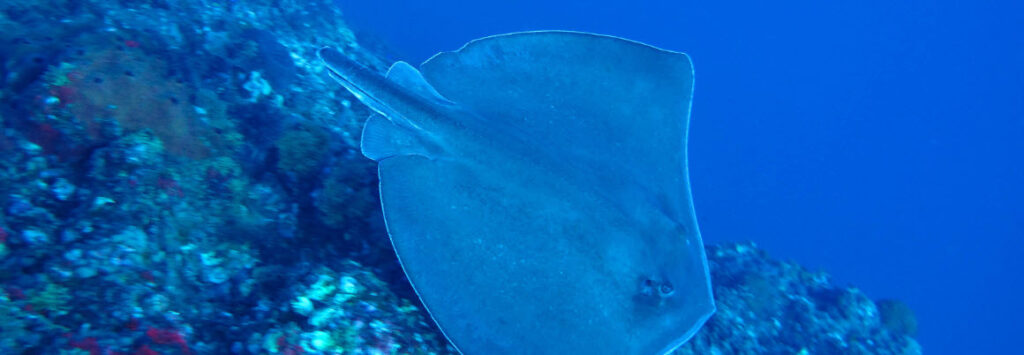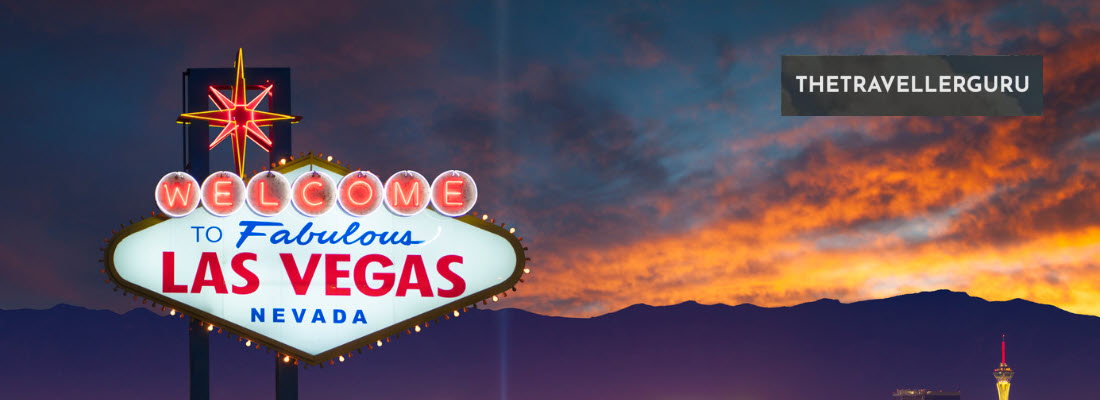Hey there my fellow travel enthusiasts and welcome to my post where we will check out my 8 best places to snorkel in the Florida Keys. The Florida Keys offer an unparalleled underwater experience for snorkelers of all skill levels. With its warm, crystal-clear waters and vibrant marine life, snorkeling in this chain of islands is like stepping into another world.
Throughout the Keys, you’ll find a variety of snorkeling spots, each with its own unique charm. And as you explore the coral reefs and seagrass beds, you’re likely to encounter a kaleidoscope of tropical fish, sea turtles and perhaps even playful dolphins as well.
- John Pennekamp Coral Reef State Park
- Bahia Honda State Park
- Molasses Reef
- Alligator Reef
- Sombrero Reef
- Looe Key National Marine Sanctuary
- Fort Zachary Taylor Historic State Park
- Dry Tortugas National Park
Map of the Best Places to Snorkel in the Florida Keys
Use this map to identify the locations of the best snorkeling in the Florida Keys as listed in the post below:
Best Places to Snorkel in the Florida Keys
The Florida Keys offer some of the most exceptional snorkeling locations in the world, showcasing vibrant coral reefs and abundant marine life. Let’s have a look at some of the best options below:
1. John Pennekamp Coral Reef State Park
John Pennekamp Coral Reef State Park in Key Largo is a unique and mesmerizing destination and renowned as America’s first undersea park. Spanning an impressive 70 nautical square miles, it offers visitors an extraordinary glimpse into the vibrant underwater world of the coral reef.
The park is not just a haven for divers and snorkelers but also provides a range of activities like canoeing, kayaking and nature trails, making it a versatile destination for all kinds of nature enthusiasts as well.
Outline for Snorkelers
- Access
- Location: Mile Marker 102.5 Overseas Highway, Key Largo, FL 33037.
- Hours: Open daily from 8 a.m. until sunset, 365 days a year.
- Entrance Fees: $8 per vehicle, plus 50 cents per person.
- Facilities: Includes a visitor center with large saltwater aquariums, nature videos in the theater and various amenities like restrooms and a gift shop.
- Snorkeling Conditions
- Visibility: Generally clear, offering excellent views of the coral and marine life.
- Water Depth: Varies across different parts of the reef, suitable for both beginners and experienced snorkelers.
- Safety: Guided snorkeling tours are available, ensuring a safe and informative experience.
- Marine Life
- Coral Reefs: The park is home to vibrant coral reefs, including hard and soft corals.
- Fish Species: Expect to see a variety of tropical fish including sergeant majors, known for their distinctive black bars.
- Other Marine Creatures: The park’s waters are also inhabited by other marine life such as sea turtles, stingrays and possibly dolphins.
- Additional Activities
- Boat Tours: Glass-bottom boat tours are available for those who prefer to stay dry.
- Kayaking and Canoeing: Explore the park’s waters and mangrove swamps.
- Camping and Picnicking: Facilities are available for an extended stay or a leisurely day visit.
John Pennekamp Coral Reef State Park offers a comprehensive and immersive experience for snorkelers and nature lovers alike with its rich marine life, excellent facilities and diverse activities. It’s a must-visit destination for anyone looking to explore the underwater wonders of the Florida Keys.
Check out these: Best Scuba Diving Spots in Florida
2. Bahia Honda State Park
Bahia Honda State Park is a breathtaking destination known for its stunning scenery, sandy beaches and crystal-clear waters. The park, which was transformed into a tropical destination in the early 1900s due to Henry Flagler’s railroad construction, is now a haven for nature lovers and water enthusiasts.
With its balmy sea breezes and magnificent sunsets, Bahia Honda State Park offers a unique opportunity to experience the beauty and serenity of the Florida Keys.
Outline for Snorkelers
- Access
- Location: 36850 Overseas Highway, Big Pine Key, FL 33043.
- Hours: Open daily from 8 a.m. until sundown, 365 days a year.
- Entrance Fees: $8 per vehicle.
- Facilities: The park offers a concession with rentals for chairs, snorkeling equipment, kayak, and also provides snacks and lunches.
- Snorkeling Conditions
- Water Quality: Known for its gin-clear waters, providing excellent visibility for snorkeling.
- Beach Access: Snorkeling can be done directly from the sandy beaches.
- Boat Trips: The park offers boat trips to the reef for snorkeling excursions, allowing access to more remote snorkeling sites.
- Marine Life
- Coral Reefs: The park’s waters are home to beautiful coral formations.
- Fish and Marine Species: Snorkelers can expect to see a variety of tropical fish and other marine life native to the Florida Keys.
- Bird Watching: The park is also a great place for observing wading birds and shorebirds.
- Additional Activities
- Kayaking: Kayaks are available for rent to explore the park’s waters.
- Camping and Picnicking: Facilities are available for those who wish to extend their stay.
- Nature Trails: The park offers trails for those interested in exploring the island’s plants and animals.
Bahia Honda State Park is an ideal destination for snorkelers looking to explore the underwater world of the Florida Keys. With its easy access, clear waters and abundant marine life, it provides an unforgettable snorkeling experience.
Additionally, the park’s amenities and activities ensure that there is something for everyone, making it a perfect getaway for nature enthusiasts and families alike.

Check out these: Things to Do in the Florida Keys
3. Molasses Reef
Molasses Reef, located near Key Largo in the Florida Keys, is one of the most popular and well-known snorkeling spots in the region. This reef is part of the Florida Keys National Marine Sanctuary and is renowned for its stunning underwater visibility, vibrant coral formations and diverse marine life.
Furthermore, the reef is a favorite among snorkelers and divers alike due to its accessibility and the abundance of sea life that can be observed in its waters.
Outline for Snorkelers
- Access
- Boat Access: Molasses Reef is typically accessed by boat. Numerous charter services in Key Largo offer snorkeling trips to the reef.
- Location: About six miles offshore from Key Largo.
- Snorkeling Conditions
- Water Visibility: Known for its clear waters, offering excellent visibility for observing marine life.
- Depth: The reef has varying depths, making it suitable for both beginner and experienced snorkelers.
- Marine Life
- Coral Species: Home to a variety of corals, including elkhorn and brain coral.
- Fish and Marine Species: Snorkelers can expect to see tropical fish such as parrotfish and angelfish as well as larger species like goliath grouper.
- Other Wildlife: The reef is also a habitat for various other marine creatures including sea turtles and stingrays.
- Additional Information
- Preservation Efforts: As part of the Florida Keys National Marine Sanctuary, Molasses Reef is under protection and conservation efforts.
- Safety and Regulations: Snorkelers should be aware of and adhere to all sanctuary regulations to help preserve the reef’s natural beauty and biodiversity.
Molasses Reef offers a quintessential Florida Keys snorkeling experience with its abundant marine life and beautiful coral formations. It’s a must-visit location for anyone looking to explore the underwater wonders of this region.
Book your trip to Florida here!
4. Alligator Reef
Alligator Reef, located near Islamorada in the Florida Keys, is a renowned snorkeling destination known for its rich marine life and historical significance and named after the U.S. Navy schooner “Alligator,” which sank in 1822 while protecting a Spanish merchant fleet from pirates.
Today, the reef is marked by the Alligator Reef Lighthouse, making it a unique and picturesque snorkeling spot.
Outline for Snorkelers
- Access
- Boat Access: Alligator Reef is primarily accessed by boat. Numerous charter services in Islamorada offer snorkeling trips to the reef.
- Location: The reef is located a little less than five miles east of Indian Key.
- Snorkeling Conditions
- Water Visibility: The reef typically has clear waters, providing excellent visibility for snorkelers.
- Depth: The reef offers various depths, accommodating both novice and experienced snorkelers.
- Marine Life
- Coral Species: The reef is home to a diverse array of corals.
- Fish and Marine Species: Snorkelers can expect to see a variety of tropical fish including parrotfish, angelfish and barracuda. Nurse sharks are also common.
- Other Wildlife: The area is known for sightings of sea turtles and spotted eagle rays. Dolphins are often seen from tour boats.
- Additional Information
- Historical Significance: The presence of the Alligator Reef Lighthouse adds a historical dimension to the snorkeling experience.
- Conservation: As part of the Florida Keys National Marine Sanctuary, the reef is under protection, and snorkelers are encouraged to respect and help preserve its natural state.
Alligator Reef offers a unique snorkeling experience with its combination of historical intrigue and abundant marine life. It’s a must-visit location for snorkelers and marine enthusiasts visiting the Florida Keys.

Check out these: 3 Best Travel Snorkel Sets
5. Sombrero Reef
Sombrero Reef, a part of the Florida Keys National Marine Sanctuary, is located near Marathon and known for its vibrant marine life. A popular destination for snorkelers and divers, the reef is marked by the Sombrero Key Lighthouse, which has been guiding sailors since the mid-19th century.
The clear waters and abundant sea life make Sombrero Reef a must-visit location for underwater enthusiasts.
Outline for Snorkelers
- Access
- Boat Access: Access to Sombrero Reef is typically by boat. Many charter services in Marathon offer snorkeling trips to the reef.
- Location: The reef is situated in the Sombrero Key Sanctuary Preservation Area, south of Pigeon Key.
- Snorkeling Conditions
- Water Visibility: The reef is known for its clear waters, offering excellent visibility.
- Depth: The reef has varying depths, ranging from six to 25 feet, suitable for snorkelers of all skill levels.
- Marine Life
- Coral Species: The reef features impressive coral formations including large brain corals and elkhorn corals.
- Fish and Marine Species: Snorkelers can expect to see a variety of tropical fish including parrotfish, snapper and angelfish.
- Other Wildlife: The reef is also home to other marine life such as lobsters and occasionally sea turtles.
- Additional Information
- Conservation Area: As part of a Sanctuary Preservation Area, Sombrero Reef is protected, and snorkelers are encouraged to respect the reef’s ecosystem.
- Safety and Regulations: It’s important for snorkelers to follow all sanctuary rules to help preserve the natural beauty and health of the reef.
Sombrero Reef offers a rich snorkeling experience with its diverse marine life and beautiful coral formations. It’s an ideal destination for those looking to explore the underwater world of the Florida Keys and experience the beauty of a protected marine sanctuary.
6. Looe Key
Looe Key, located near Bahia Honda State Park in the Florida Keys, is a celebrated snorkeling and diving site known for its exceptional coral reef system. Named after the British ship HMS Looe, which sank nearby in 1744, Looe Key is part of the Florida Keys National Marine Sanctuary.
The reef is famous for its diverse and vibrant marine life, clear waters and unique underwater topography, making it a premier destination for snorkelers and divers alike.
Outline for Snorkelers
- Access
- Boat Access: Looe Key is accessible primarily by boat. Snorkeling tours are available from various operators in the area, including those departing from Bahia Honda State Park.
- Location: Situated about eight nautical miles southwest of Bahia Honda State Park.
- Snorkeling Conditions
- Water Visibility: Known for its crystal-clear waters, providing excellent visibility for snorkeling.
- Depth: The reef offers a range of depths, accommodating snorkelers of different experience levels.
- Marine Life
- Coral Species: Looe Key is home to a rich variety of corals, including star and elkhorn corals.
- Fish and Marine Species: The reef is teeming with marine life including colorful tropical fish like angelfish and grunts. Snorkelers may also encounter sea turtles.
- Special Sightings: The area is known for its biodiversity and lucky snorkelers might spot rare or unique marine species.
- Additional Information
- Conservation Efforts: As part of the National Marine Sanctuary, Looe Key is protected, and visitors are encouraged to follow all guidelines to help preserve its natural beauty.
- Safety and Regulations: It’s important for snorkelers to adhere to safety guidelines and sanctuary rules to ensure a sustainable and enjoyable experience for all.
Looe Key offers a spectacular snorkeling experience with its abundant marine life and stunning coral formations. It’s an ideal spot for those looking to explore the underwater wonders of the Florida Keys and experience the beauty of a thriving coral reef ecosystem.

7. Fort Zachary Taylor Historic State Park
Fort Zachary Taylor Historic State Park, located at the southern tip of Key West, offers a unique blend of natural beauty and profound historical significance. This state park is home to a pre-Civil War fort and houses the largest collection of Civil War armament in the world.
Beyond its historical allure, the park is also the southernmost state park in the continental United States and boasts Key West’s favorite beach, providing opportunities for various activities including picnicking, swimming, snorkeling, paddling and fishing.
Outline for Snorkelers
- Access
- Location: 601 Howard England Way, Key West, FL 33040.
- Hours: Open daily from 8 a.m. until sundown; the fort closes at 5 p.m.
- Entrance Fees: $6 per vehicle.
- Facilities: The park offers a range of amenities, including a concession stand, restroom facilities and rentals for chairs, umbrellas, snorkel gear and bikes.
- Snorkeling Conditions
- Beach Access: Snorkeling can be done directly from the beach at the southern end of the park.
- Water Quality: The park is known for its clear waters, ideal for snorkeling.
- Safety: The waters are generally safe for snorkeling, but it’s always advisable to be aware of changing conditions and currents.
- Marine Life
- Coral Reefs: Various species of coral can be found offshore.
- Fish and Marine Species: Snorkelers can expect to see a variety of fish, including yellow snapper and parrotfish.
- Other Wildlife: The park’s waters are also home to lobsters and a variety of other marine creatures.
- Additional Activities
- Historical Tours: Visitors can explore the red-brick corridors of Fort Zachary Taylor, learning about its role in the Civil War and Spanish-American War.
- Picnicking and Swimming: Apart from snorkeling, the park is a great spot for picnicking and swimming.
- Nature Trails: There are trails for those interested in exploring the natural and historical aspects of the park.
Fort Zachary Taylor Historic State Park offers a distinctive experience where history and nature converge. It’s an ideal destination for snorkelers looking to explore the underwater world while also enjoying the rich historical context of Key West. The park’s beach and clear waters make it a perfect spot for a day of snorkeling and relaxation.
Book your trip to Florida here!
8. Dry Tortugas National Park
Dry Tortugas National Park, located almost 70 miles west of Key West, Florida, is a remote 100-square mile park predominantly comprising open water and seven small islands. This unique park is accessible only by boat or seaplane and is celebrated for its historical significance, housing the magnificent Fort Jefferson.
It’s also renowned for its picturesque blue waters, exceptional coral reefs, diverse marine life and the vast array of bird life that frequents the area. All in all, the park offers a one-of-a-kind experience for snorkelers and history enthusiasts alike.
Outline for Snorkelers
- Access
- Modes of Transportation: Accessible only by boat or seaplane. Options include the Yankee Freedom Ferry and Key West Seaplane Charters for morning, afternoon, or full-day tours.
- Location: The park is situated about 70 miles (113 km) west of Key West.
- Snorkeling Conditions
- Water Clarity: Known for its crystal-clear waters, providing excellent visibility for snorkeling.
- Best Spots: The waters around Fort Jefferson and the surrounding coral reefs are popular for snorkeling.
- Marine Life
- Coral Reefs: Home to superlative coral reefs, offering a habitat for a wide variety of marine species.
- Fish and Marine Species: Snorkelers can expect to see a diverse range of tropical fish, along with other marine life like sea turtles and rays.
- Unique Features: The park’s remote location contributes to the preservation of its underwater ecosystems, making it a pristine area for snorkeling.
- Additional Information
- Camping: Options for camping are available on Garden Key, allowing for extended stays in the park.
- Historical Significance: Visitors can explore Fort Jefferson and learn about its history.
- Conservation: As a protected area, visitors are encouraged to follow all guidelines to help preserve the natural beauty and historical significance of the park.
Dry Tortugas National Park offers an extraordinary snorkeling experience, combining natural underwater wonders with a rich historical backdrop. Its remote location contributes to the preservation and beauty of its marine environments, making it a must-visit destination for those seeking an unparalleled snorkeling adventure.

Check out these: Best Snorkeling Spots in Florida
Overview of the Florida Keys
The Florida Keys are a string of tropical islands stretching about 120 miles off the southern tip of Florida between the Atlantic Ocean and the Gulf of Mexico. The region is renowned for its laid-back atmosphere, clear blue waters and extensive coral reef system, which is the third largest in the world making it a premier destination for snorkelers.
As you explore the Keys, you’ll encounter various environments, from mangrove-fringed shores to vibrant coral reefs. The archipelago is divided into five regions:
- Key Largo: Known as the “Diving Capital of the World,” with notable spots like John Pennekamp Coral Reef State Park.
- Islamorada: Often referred to as the “Sportfishing Capital of the World,” also offers superb snorkeling at locations like Alligator Reef.
- Marathon: Home to the family-friendly Sombrero Beach with nearby beautiful reefs.
- Big Pine Key & The Lower Keys: Here lies the Looe Key Reef, part of the protected Florida Keys National Marine Sanctuary.
- Key West: The southernmost point features Fort Zachary Taylor State Park and Dry Tortugas National Park.
Each island offers unique snorkeling experiences, with warm waters year-round and a chance for you to see an array of marine life, including colorful tropical fish, sea turtles and various types of coral.
Your adventure can include snorkeling directly from the beaches or taking a boat to a secluded spot on the reef. The Keys are a welcoming treasure for both novice and experienced snorkelers.
Check out these: Best Fishing Spots in Florida
Seasonal Snorkeling Considerations
When planning your snorkeling trip to the Florida Keys, understanding the seasonal differences is crucial for an optimal experience. Here’s what you need to consider:
Water Temperature:
- Summer (June – August): Expect warm waters, typically around 85 to 90 degrees Fahrenheit, which is comfortable for snorkeling without a wetsuit.
- Winter (December – February): Water temperatures can drop to 70 degrees Fahrenheit. It’s often preferable to wear a wetsuit for thermal protection.
Weather Patterns:
- Summer: Calm and clear conditions are usual, but afternoon thunderstorms are common. Aim for morning snorkel sessions.
- Winter: Cooler and windier conditions may lead to choppier waters, affecting visibility. Plan your trips around the weather forecasts.
Sea Life Activity:
- Certain marine life, such as sea turtles and some fish species, may be more or less prevalent depending on the season. For example, the Florida Keys’ spiny lobster season typically begins in August, which is a popular time for spotting these creatures.
Crowds:
- Peak tourist season is usually from December through April, coinciding with the colder months up north. You may find popular snorkeling spots to be busier during these months.
Safety and Comfort: Always prioritize safety by checking the local weather and sea conditions before setting out, regardless of the season. And remember to apply environmentally safe sunscreen to protect your skin and the marine habitat.
By taking these factors into account, you can better plan your snorkeling adventures for a safe and enjoyable experience in the Florida Keys.
Snorkeling Tour Operators in the Florida Keys
When you’re looking to explore the vibrant underwater world of the Florida Keys, reputable snorkeling tour operators can enhance your experience. Below are some of the established snorkeling tour providers you might consider.
Key Largo
- John Pennekamp Reef State Park Tours
- Highlights: Access to the park’s intricate reefs and marine life.
- Departures: Varied schedule, check with the park service.
Key West
- Luxury Catamaran Excursions
- Departure Point: 631 Greene St. Key West, FL 33040
- Duration: Approximately 3 hours
- Includes: Snorkeling gear, instructions and refreshments.
Popular Sites
- Christ of the Abyss Tours
- Specialty: Guided trips to the famous underwater statue surrounded by rich coral formations.
Specialized Tours
- Private Charter Options
- Benefit: Personalized and flexible itineraries to secluded spots.
Ensure you verify the departure times and specific offerings as they can vary. Most operators provide all necessary equipment and often include refreshments.
It’s advisable however to inquire about the size of the group and the duration of the tour to find an option that suits your preferences. Remember, an exceptional snorkeling adventure awaits with the expertise of local Florida Keys guides.
FAQs
What are the top recommended snorkeling spots in the Florida Keys for seeing vibrant coral reefs?
The Florida Keys host abundant coral reefs teeming with marine life. Alligator Reef near Islamorada and Looe Key Reef near Big Pine Key are especially known for their vibrant corals. You may also want to explore Sombrero Key Reef near Marathon for a mesmerizing underwater scene.
Conclusion
There you have it, 8 best snorkeling spots in the Florida Keys. As usual, let me know of your experiences here or if there is anywhere you think I need to add.
Also, please do not hesitate to comment below if you have any questions, concerns, or corrections or would like me to check anything else out for you.
Until next time.
Have fun
Paul






